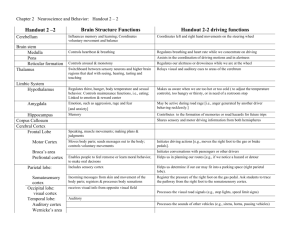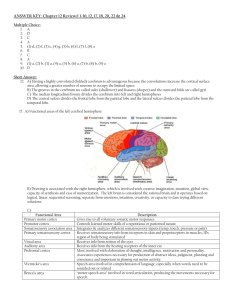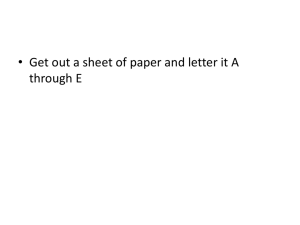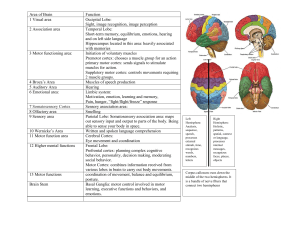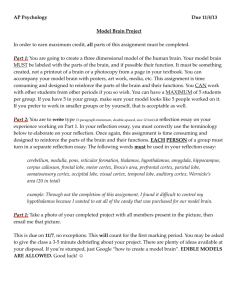Classroom Exercise: Mastering Brain Structure
advertisement
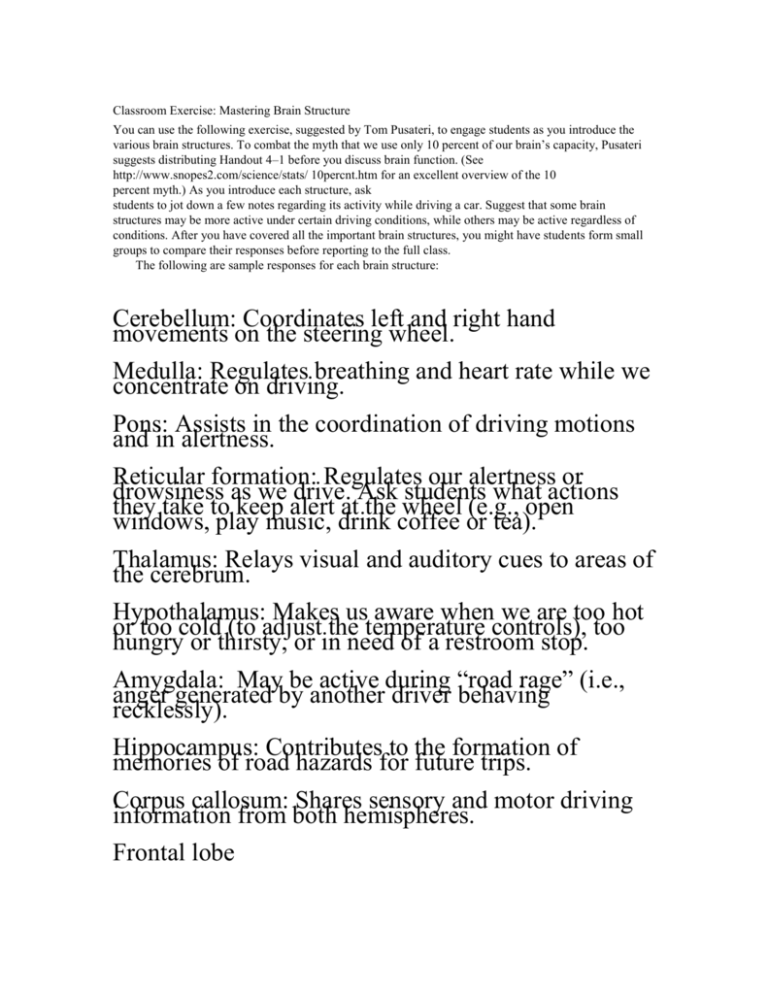
Classroom Exercise: Mastering Brain Structure You can use the following exercise, suggested by Tom Pusateri, to engage students as you introduce the various brain structures. To combat the myth that we use only 10 percent of our brain’s capacity, Pusateri suggests distributing Handout 4–1 before you discuss brain function. (See http://www.snopes2.com/science/stats/ 10percnt.htm for an excellent overview of the 10 percent myth.) As you introduce each structure, ask students to jot down a few notes regarding its activity while driving a car. Suggest that some brain structures may be more active under certain driving conditions, while others may be active regardless of conditions. After you have covered all the important brain structures, you might have students form small groups to compare their responses before reporting to the full class. The following are sample responses for each brain structure: Cerebellum: Coordinates left and right hand movements on the steering wheel. Medulla: Regulates breathing and heart rate while we concentrate on driving. Pons: Assists in the coordination of driving motions and in alertness. Reticular formation: Regulates our alertness or drowsiness as we drive. Ask students what actions they take to keep alert at the wheel (e.g., open windows, play music, drink coffee or tea). Thalamus: Relays visual and auditory cues to areas of the cerebrum. Hypothalamus: Makes us aware when we are too hot or too cold (to adjust the temperature controls), too hungry or thirsty, or in need of a restroom stop. Amygdala: May be active during “road rage” (i.e., anger generated by another driver behaving recklessly). Hippocampus: Contributes to the formation of memories of road hazards for future trips. Corpus callosum: Shares sensory and motor driving information from both hemispheres. Frontal lobe Motor cortex: Initiates driving actions (e.g., moves the right foot to the gas or brake pedals). Ask students to trace the pathway from the motor cortex to the right foot. Broca’s area: Initiates conversations with passengers or other drivers. Prefrontal cortex: Helps us in planning our routes (e.g., if we notice a hazard or detour). Parietal lobe: Helps us determine if our car may fit into a parking space (right parietal lobe). Somatosensory cortex: Registers the pressure of the right foot on the gas pedal or brake. Ask students to trace the pathway from the right foot to the somatosensory cortex. Occipital lobe Visual cortex: Processes the visual road signals (e.g., stop lights, speed limit signs). Temporal lobe Auditory cortex: Processes the sounds of other vehicles (e.g., sirens, horns, passing vehicles). Wernicke’s area: Processes speech sounds from passengers, other drivers, police officers.




